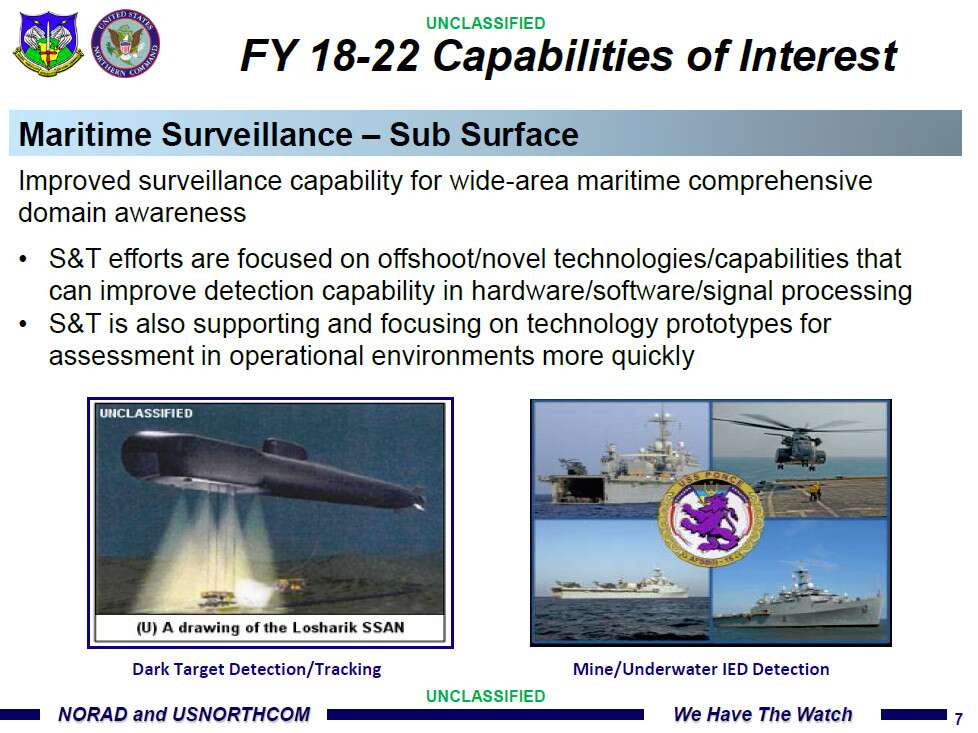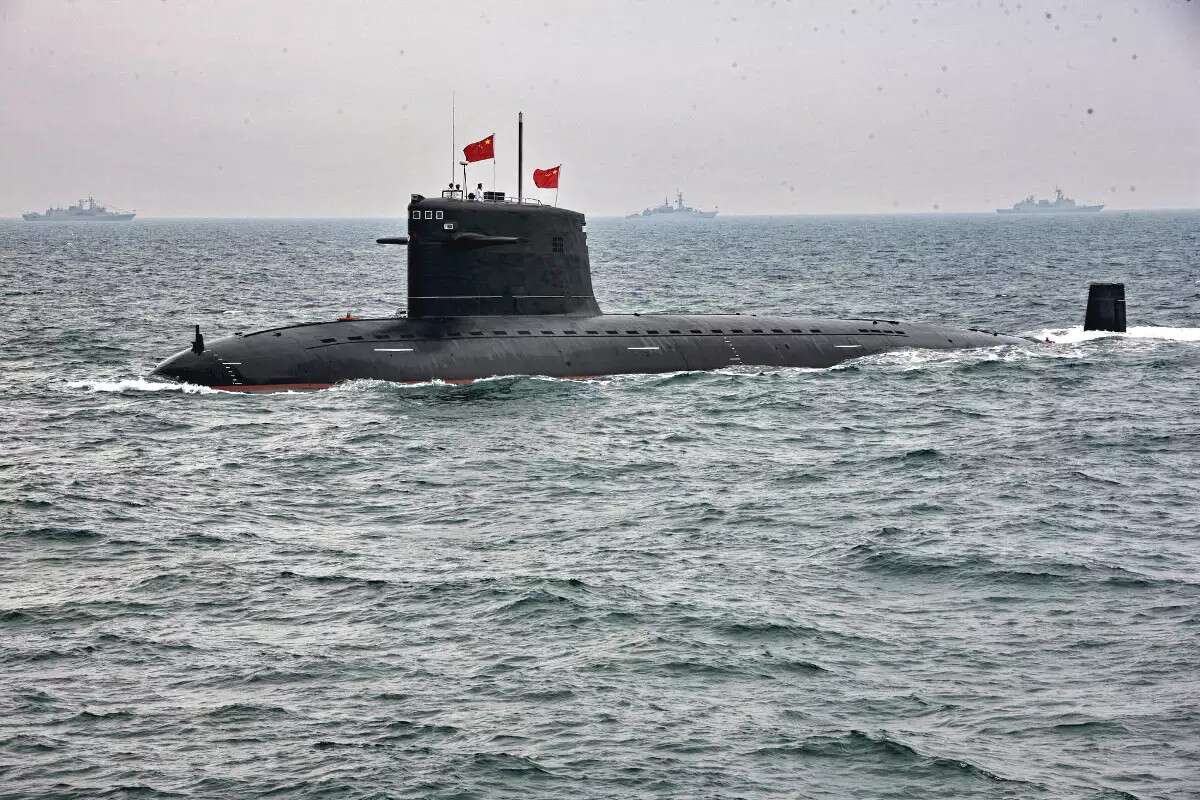The U.S. Navy’s top officer has warned that Russian submarines are prowling the Atlantic Ocean at rates not seen since the end of the Cold War and that China is beginning to increase its naval activity closer to American shores. Though there has certainly been an uptick in these activities, the available evidence points to the nature of those operations, rather than the exact number of ships as being the real source of concern.
Chief of Naval Operations Admiral John Richardson explained his worries in an interview that Voice of America, or VOA, published on Aug. 6, 2018. It’s not the first time he has raised these concerns and he had directed the Navy to reactivate the 2nd Fleet to oversee naval operations in the northwest Atlantic in May 2018. That command will hold a formal establishment ceremony at Naval Station Norfolk on Aug. 24, 2018.
“We’re talking about more [Russian submarine activity] than we’ve seen in 25 years,” Richardson told VOA. “Even five years ago, we wouldn’t have seen anything like this,” he added regarding Chinese naval activity in the region.
There is no debate that Russia is making a very public push to reinvigorate its naval operations and conduct more routine patrols in the Atlantic and elsewhere. Russian President Vladimir Putin has made clear that the goal of this effort is, at least in part, is to enhance his country’s nuclear deterrent capabilities.
Russia’s Borei-class ballistic missile submarine Alexander Nevsky.
“A total of 102 voyages by surface ships and submarines are scheduled for this year,” Putin said in May 2018. “It is essential to enhance the naval component of the strategic nuclear force. This will increase the role of the Navy in nuclear deterrence.”
The plan is also to have more ships and submarines patrolling with conventional stand-off land-attack cruise missiles in places where they could rush to intervene in support of the Kremlin’s interests or in defense of its foreign partners. This would be an extension of the model Russia has applied in Syria, where Russian forces have demonstrated a variety of expeditionary capabilities and hybrid warfare concepts that were essential in keeping dictator Bashar Al Assad in power and allowing him to regain his footing.
What’s less clear is how ready and able the Russian Navy, especially its submarine forces, is to meet these objectives. For example, publicly available evidence suggests that the Kremlin has stepped up deterrent patrols with ballistic missile submarines in the Atlantic, but only by shifting resources and reducing those operations in the Pacific. There are real questions about whether the Kremlin has the manpower and other resources necessary to turn any surge in operations into a permanent routine.
The Russians also would not have to increase their submarine activity very much for it to look impressive compared to what it was 25 years ago based on the Navy’s own reporting, according to the Federation of American Scientists. In 1993, Russia’s Navy sent ballistic missile submarines on around 20 patrols and had cruise missile and attack boats make around 15 sorties. Even in 1989, Soviet submarine activity was half of what it was between 1983 and 1984 and was steadily trending downward.
As of 2008, the Russian submarine force as a whole had been averaging approximately 20 sorties a year for a decade. If that number had doubled by 2018 it would indeed be a major increase “since the end of the cold war,” but still less than the Soviet Navy’s typical operating levels in the 1980s.
“We watch all submarine activity,” Secretary of Defense James Mattis told reporters on Aug. 7, 2018, when asked about the reports. “I’m not concerned about it.”
But it’s the exact nature of present Russian submarine operations that actually seems to have the U.S. military most concerned. In particular, the Kremlin has reportedly been deploying boats near undersea cables in the North Atlantic at an unprecedented rate.
“We are now seeing Russian underwater activity in the vicinity of undersea cables that I don’t believe we have ever seen,” U.S. Navy Rear Admiral Andrew Lennon, who serves as NATO’s top submarine officer, revealed to The Washington Post in December 2017. “Russia is clearly taking an interest in NATO and NATO nations’ undersea infrastructure.”
Russia has invested heavily in special mission submarines that experts widely believe can cut and tap these capable, which could allow them access to sensitive data or give them a means to cut off the flow of information in a crisis. In 2016, at an event the National Defense Industry Association hosted, Robin Brunner, then-Director of Science and Technology for U.S. Northern Command, used the Russian Navy’s nuclear-powered midget submarine Losharik as an example of worrisome maritime “dark targets” that were especially difficult to detect and monitor.
A slide from a briefing that then-Director of Science and Technology for U.S. Northern Command Robin Brunner gave in 2016 that shows an artist’s conception of Losharik as an example of a maritime “dark target.”
The fear is that this boat, and others like it, might be able to operate close to American shores without anyone knowing, tapping cables, deploying sensors, or otherwise collecting intelligence. With the Kremlin investing heavily in long-range nuclear-powered and nuclear-armed torpedoes and unmanned underwater vehicles, there is a concern that even a small number of Russian submarines might be able to present an outsized and asymmetric threat in the North Atlantic.
It is similarly the nature of Chinese naval activity in the Atlantic is particularly notable, rather than how many ships it sends there, at least at the moment. China is actively seeking to evolve from a regional power into a global one.
The video below shows actual footage of Russia’s Poseidon long-range, nuclear-armed torpedo, as well as computer generated clips of how the Russians might employ it during an actual conflict.
https://youtube.com/watch?v=T_7hWSv689Q%3Frel%3D0
On top of that, unlike Russia, the country does appear to have the resources necessary to pursue its plans, at least in the near term. China is in the midst of a massive push to increase both the size and capabilities of the People’s Liberation Army Navy (PLAN) with the plans to add dozens of modern surface warships, including new destroyers and a fleet of supercarriers, as well as more nuclear and advanced diesel-electric submarines capable of longer range operations.
It is also rapidly expanding its own network of formal bases and agreements with foreign countries that allow its military ships to use their commercial ports. These will all enable it to conduct operations at will not just in the Atlantic, but also in the Pacific, around Europe, off the coasts of Africa, and in the increasing strategic Arctic region.
The PLAN is already “ready and capable” of operating worldwide, Admiral Richardson told VOA. “They’re certainly a pacing competition for us in terms of the naval threat.”
Much more so than Russia, China appears to be the United States’ next major global competitor, with the PLAN at the forefront of its ability to project force, as well as economic power well beyond its borders. The Chinese military is already challenging the U.S. Navy’s ability to operate freely across wide swaths of the Pacific region.
Richardson is right to be concerned that authorities in Beijing might be interested in expanding those activities into other areas where the U.S. Navy has typically enjoyed unfettered naval supremacy. That the PLAN is sending ships into the North Atlantic at all would seem to suggest it is looking to make its presence felt and sends a signal that, while these sorties might not be a direct challenge to the United States now, they could be in the near future.
A Chinese Type 091 nuclear-powered attack submarine.
With the reactivation of 2nd Fleet, which the Navy had shuttered in 2011 due to budget cuts and limits concerns about threats at Atlantic at the time, it is clear that the service is taking this uptick in naval activity seriously, whether it’s cause for actual concern right now or not. It is definitely important for the U.S. military to begin devising ways to mitigate any future threats now.
Stepping up American naval operations in the northwestern Atlantic could be a daunting task, given the existing strains on the service’s surface and subsurface fleets, maintenance backlogs, and personnel shortages, not to mention other operational demands. The Navy has a long-standing goal of a total fleet size of 355 ships to help mitigate some of these issues, but even with a new influx of funds, it has been difficult to see how the service would get there any time soon.
At the same time, operations in the North Atlantic could be a perfect opportunity to test out new operational concepts and the use of smaller ships to cost-effectively monitor a region of interest. The relatively limited area that 2nd Fleet has to cover would be a good proving ground to explore the Navy might be able to do with its future guided missile frigates, its growing fleets of long-range unmanned surface and undersea vehicles, and other emerging technologies.
However the Navy decides to respond to increased Russian and Chinese naval activity in Atlantic, it will have to ensure its plans truly address the complex challenges those operations pose, regardless of how many potentially hostile ships and submarines are actually cruising around the region.
Contact the author: [email protected]
Source: Read Full Article



